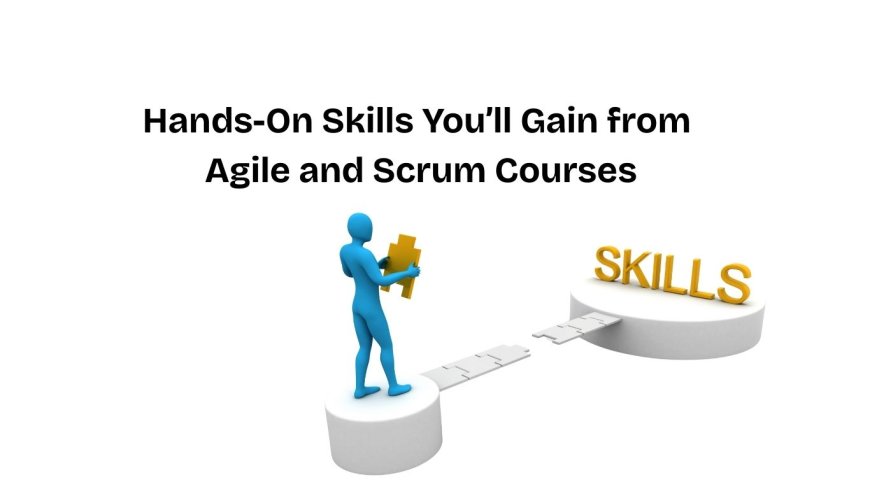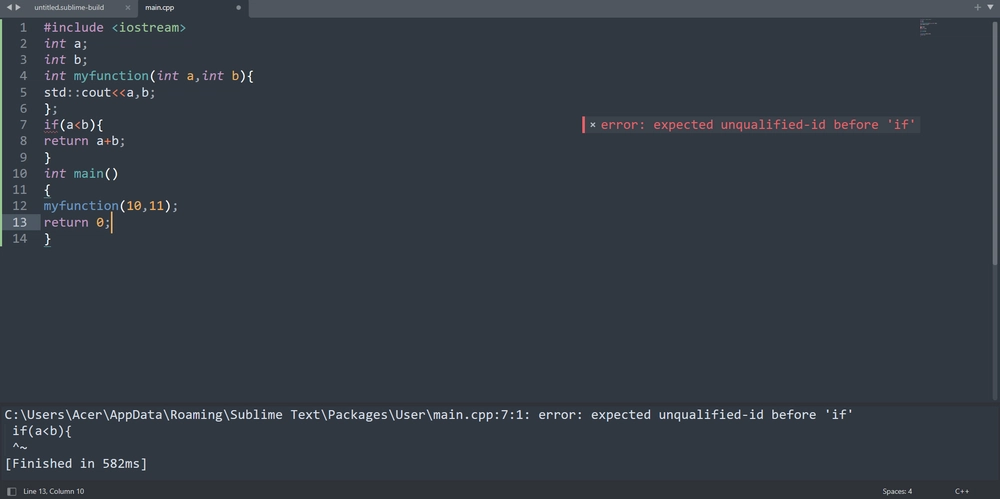Hands-On Skills You’ll Gain from Agile and Scrum Courses

Introduction:
In today’s fast-paced tech world, organizations are turning to agile and scrum methodologies to streamline workflows, boost team collaboration, and deliver high-quality products faster. As a result, demand for certified Scrum professionals is skyrocketing.
If you're considering enrolling in agile and scrum courses or pursuing a scrum certification online, you're on the right track. But what sets candidates apart in the job market is their hands-on experience and applied skills, not just theoretical knowledge.
This blog post dives deep into the real-world, job-ready skills you’ll gain from agile and scrum courses, especially through a structured Professional Scrum Master course. Whether you’re aiming for Scrum master training and placement or planning to upskill, you’ll learn exactly how these programs prepare you for success.
What Is a Scrum Master and Why Does It Matter?
Role of a Scrum Master in Agile Environments
A Scrum Master isn’t just a meeting facilitator. They're servant-leaders who coach teams, resolve impediments, and ensure adherence to agile principles. Companies today rely on Scrum Masters to keep product development agile, adaptive, and aligned with customer needs.
Growing Market Demand
According to the U.S. Bureau of Labor Statistics, jobs in software development (including scrum and agile roles) are expected to grow 25% by 2031. Companies are actively seeking professionals with both agile scrum certification and demonstrable project experience.
-
Mastering the Scrum Framework
Understanding Scrum Roles, Events, and Artifacts
Agile and Scrum courses provide you with hands-on opportunities to master the three key roles:
-
Scrum Master
-
Product Owner
-
Development Team
You’ll practice conducting events such as:
-
Sprint Planning
-
Daily Scrum
-
Sprint Review
-
Sprint Retrospective
You'll also learn how to use artifacts like:
-
Product Backlog
-
Sprint Backlog
-
Increment
This foundational understanding forms the baseline for effective project delivery.
Real-World Application:
Courses include simulations where learners act out each role, participate in live sprints, and manage backlogs. This mimics real workplace environments, building both competence and confidence.
-
Facilitation and Coaching Techniques
Communication Mastery
Through role-plays and group discussions, you’ll develop strong interpersonal skills to:
-
Mediate team conflicts
-
Facilitate productive meetings
-
Encourage cross-functional collaboration
Coaching in Action
Scrum masters need to coach teams on agile principles. Scrum certification courses include mock coaching sessions where you practice:
-
One-on-one mentoring
-
Team retrospectives
-
Feedback mechanisms
These simulations mirror real organizational dynamics, ensuring that your communication and coaching skills are job-ready.
-
Agile Planning and Estimation Skills
Sprint Planning Exercises
Agile and Scrum courses don’t just teach theory. You’ll practice breaking down epics into user stories and estimating them using:
-
Planning Poker
-
T-Shirt Sizing
-
Fibonacci Sequence
Velocity and Burndown Charts
You’ll build and track sprint metrics using real-time data. This helps in measuring progress and adjusting plans, skills that are essential for scrum master training and placement.
Practical Tip:
During these exercises, learners use Agile tools like Jira or Trello, offering a platform-based experience identical to what’s used in top organizations.
-
Risk Management and Problem Solving
Identifying Impediments
You’ll gain hands-on experience diagnosing and removing project blockers. Agile and scrum courses often simulate issues such as:
-
Team misalignment
-
Requirement ambiguities
-
Overlapping sprints
Conflict Resolution
Real-world Scrum certification courses encourage you to address these problems through:
-
Root cause analysis (e.g., 5 Whys)
-
Fishbone diagrams
-
Retrospective action plans
By solving these issues in a controlled environment, you’re prepared to handle them in high-stakes, real-world projects.
-
Agile Metrics and Continuous Improvement
Working with Agile KPIs
Scrum master certification courses teach you how to:
-
Track velocity
-
Monitor sprint progress
-
Analyze defect density
-
Evaluate customer satisfaction
Applying Metrics
You’ll use these metrics to make decisions during sprint reviews and retrospectives, ensuring each sprint is better than the last.
Real-World Impact
Professionals trained in these areas are better prepared for scrum master training and placement, as companies prioritize those who can demonstrate impact-driven thinking.
-
Using Scrum Tools and Dashboards
Hands-On Software Training
Expect practical exposure to tools such as:
-
Jira
-
Confluence
-
Rally
-
Azure DevOps
You’ll set up projects, manage sprints, assign tasks, and generate reports. This type of tool proficiency is essential in today’s hybrid and remote working environments.
Building Workflows
You’ll learn to customize scrum boards, set WIP limits, and integrate feedback loops—skills that differentiate average from exceptional scrum masters.
-
Product Ownership and Stakeholder Management
Business Value Focus
While the scrum master doesn’t define the product, understanding the Product Owner’s mindset is crucial. Agile and Scrum courses provide insight into:
-
Prioritization techniques (e.g., MoSCoW, Kano Model)
-
Stakeholder negotiation
-
Value-driven delivery
Simulation Exercises
Many courses simulate stakeholder interviews and backlog grooming sessions, giving you practice in aligning development with business objectives.
-
Agile Mindset and Cultural Adaptation
Building an Agile Mindset
Agile and Scrum courses emphasize adaptability, transparency, and iterative improvement. These aren’t just buzzwords, they’re practiced through:
-
Continuous feedback loops
-
Inspect-and-adapt cycles
-
Growth-oriented retrospectives
Cultural Sensitivity in Global Teams
With globalization, Scrum Masters often manage cross-cultural teams. These courses prepare you to:
-
Communicate across cultures
-
Navigate time zone and language barriers
-
Promote inclusivity in agile environments
-
Interview and Resume Preparation
Placement Support
Top programs offering scrum master training and placement include career services such as:
-
Resume refinement for agile roles
-
Mock interviews
-
Job application coaching
Real-Time Projects for Portfolios
Courses often include capstone projects that simulate enterprise-level scrum environments. These projects can be showcased during interviews to demonstrate real-world experience.
-
Certifications That Validate Your Skills
Getting Certified
You’ll be prepared to pass exams such as:
-
Professional Scrum Master (PSM)
-
Certified ScrumMaster (CSM)
These are internationally recognized credentials that prove your expertise.
Why Online Scrum Certification Works
With flexible schedules, self-paced learning, and interactive sessions, scrum certification online is a practical and accessible path for working professionals and beginners alike.
Conclusion:
Learning about agile principles is one thing. Practicing them in real-world scenarios is what transforms careers.
By enrolling in structured, practical agile and scrum courses, you don’t just earn a certificate, you gain actionable skills in communication, leadership, planning, and problem-solving. These are the exact competencies companies look for when hiring for scrum master roles.
Call to Action
Take your career to the next level with hands-on learning. Enroll in H2K Infosys’ Agile and scrum certification courses today and gain the skills that employers are actively looking for.












































































































































































![[The AI Show Episode 146]: Rise of “AI-First” Companies, AI Job Disruption, GPT-4o Update Gets Rolled Back, How Big Consulting Firms Use AI, and Meta AI App](https://www.marketingaiinstitute.com/hubfs/ep%20146%20cover.png)



























































































































![[DEALS] The ChatGPT & AI Super Bundle (91% off) & Other Deals Up To 98% Off – Offers End Soon!](https://www.javacodegeeks.com/wp-content/uploads/2012/12/jcg-logo.jpg)

![How to make Developer Friends When You Don't Live in Silicon Valley, with Iraqi Engineer Code;Life [Podcast #172]](https://cdn.hashnode.com/res/hashnode/image/upload/v1747360508340/f07040cd-3eeb-443c-b4fb-370f6a4a14da.png?#)



















































































































































































































































![Apple May Not Update AirPods Until 2026, Lighter AirPods Max Coming in 2027 [Kuo]](https://www.iclarified.com/images/news/97350/97350/97350-640.jpg)

![iPhone 17 Air Could Get a Boost From TDK's New Silicon Battery Tech [Report]](https://www.iclarified.com/images/news/97344/97344/97344-640.jpg)
![Vision Pro Owners Say They Regret $3,500 Purchase [WSJ]](https://www.iclarified.com/images/news/97347/97347/97347-640.jpg)





































































